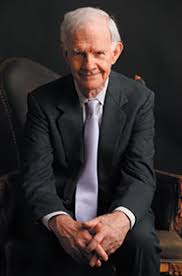I came to religious education from teaching religion in a Catholic high school. As a member of the teaching order of Christian Brothers, one taught a daily religion class. I was given the opportunity to go to any university of my choice to study for a doctorate in religious education. I chose to go to the Catholic University of America in Washington, D.C. and never regretted that choice. Gerard Sloyan was a chief inspiration of my life, a person who combined precise scholarship, deep piety and a gentle demeanor. The program revolved around the study of the Bible, the practice of liturgy and catechetical implications for the changes in church and society that began in the early 1960s.
I stumbled upon a thesis topic of exploring the Protestant-Catholic discussion of the relation between scripture and tradition. The more I pursued the issue the more I became convinced that there was a big problem unresolved since the Reformation. My doctoral dissertation was published as two books. The first was the theological implications of questioning the category of revelation; the second book, which in Britain had the title
“God Still Speaks,” was the educational implications of that questioning.
The topic of revelation became a central and fruitful subject of inquiry for me. But what was not immediately clear to me was that it carried me outside the boundaries of Christian theology. From 1970 onward I considered myself not in theology but in a separate field of religious education. My insistence that theology might be a part of religious education but not vice versa did not go over well in the Catholic Church.
In 1967 I met and began to work with Maria Harris; our partnership continued until her death in 2005. She was a continuing link I did have with the church and she was the chief support for everything I did. She taught me how to teach better and to be a better human being.
I found a home at New York University in 1979 which had one of the few doctoral programs of religious education in a secular school of education. I spent 35 years teaching at NYU up to this present year. Dealing with the religious, ethnic and racial diversity of the student body gave me a great education. I became convinced that religious education is a worldwide need but it remains an inchoate field everywhere. Religious education is more clearly defined in most English speaking countries than in the United States but it is spoken of as a school subject. My criticism of this way that the English and Welsh talk about religious education was not well received by them.
Throughout the years my writing spread into topics that to others might seem far removed from religious education but for me they were related. In recent years much of my involvement at NYU has been in international education. Religion is not much featured in such programs but I consider the absence of religion a crucial issue. UN surveys of religious education in the world reveal, I think, that no country has a perfect or even generally adequate approach to religious education.
I have argued that a lifelong religious education must include two distinct and contrasting parts: teaching an understanding of religion and teaching how to practice one’s religious life. The two parts require different institutional settings, each with its own educational aim. The synthesis of the two parts has to be done by the learner.
